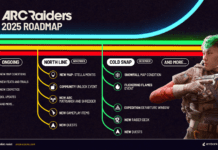More than two decades after their humble start, the Mega Man Battle Network games are still considered a classic series of genre-busting JRPGs.
Going into the 21st century, the state of the Mega Man franchise was becoming hazy. Classic Mega Man had run its course for the time being, and the X games were intended to end at X5 in 2000, and then X6 in 2001. Another Mega Man Legends sequel was not in the cards, so the Mega Man series suddenly had a huge opening for new projects. The Mega Man Zero series would not be announced until 2002, so while the X games continued to plug along on PlayStation consoles, there looked to be a sizable Mega Man drought for Nintendo consoles.
That changed when Mega Man Battle Network was announced in August 2000. The game would become a Game Boy Advance launch title in Japan on March 21st, 2001, and a North American release would follow later that year. It was meant to capitalize on the ongoing Pokemon craze while also providing a new take on the Mega Man franchise. Battle Network was swiftly joined on the GBA by Mega Man Zero, and the two series carried the Mega Man franchise for the next five years. Although the first Mega Man Battle Network was rough around the edges, its ideas were stellar, and fans were rewarded with a unique series that went on to inspire its own subgenre of action-RPGs.
The Mega Man Battle Network games are a series of action-RPGs that combine classic dungeon crawling with twitch-based Mega Man combat set on a 6-by-3 grid. Players and enemies could move in real time, using different attacks to damage each other and affect the tiles themselves. Players also had access to Battle Chips that functioned like a deck of cards built throughout the game. The player’s chip collection in the first Battle Network could already grow fairly large, and by the end of the six-game series, there were over one thousand individual Battle Chips. Later games had crossover content with the Hideo Kojima GBA series Boktai, which was unfortunately cut in the English release of BN6. Combined with the different forms that MegaMan.EXE gained over the course of the series, along with some other playable characters, the Battle Network games had a staggering amount of content.
The statement that Mega Man Battle Network was positioned to rival Pokemon was no idle threat. Right from the get-go, the Battle Network series came equipped with competitive multiplayer. Players could match their Battle Chips against each other, bet chips on fights, and trade them. A few installments in, the series also copied the two-version release format of mainline Pokemon titles. An anime, most of which was dubbed, loosely adapted the stories of several Battle Network titles, and a surprisingly good manga series worked its way through all six installments. There were even spin-off games for this Mega Man side series, several of which never made it out of Japan.
Mega Man Battle Network was a sensational success, and while its experimental gameplay played a large part, its world and characters may have been even more important. The Battle Network games take place in an alternate timeline from the other Mega Man titles. In this timeline, Dr. Light, who is instead named Dr. Tadashi Hikari, majored in computer science instead of robotics and created an advanced form of the internet. This spiraled into creating a whole dimension entirely within cyberspace, within which living programs can be found. Some of these are viruses, but others are NetNavis owned by human operators who use them to perform various digital functions.
Just about every classic Mega Man character, alongside a few Mega Man X characters, has been redesigned and inserted somewhere in this franchise along with a human partner. Protagonists MegaMan.EXE and Lan Hikari are just the tip of the iceberg. These designs have received massive praise from fans, and contribute to the excellent art design of the whole series. Diligent players had better get used to seeing them, as they all put up a stiff fight when challenged as bonus bosses. The Mega Man Battle Network series gave way to the Mega Man Star Force games on the DS, after which the Battle Chip gameplay style was abandoned. Fan projects and a few games like One Step From Eden have kept Battle Network’s spirit alive, and fans would love nothing more than to see the next Legacy Collection tackle the Mega Man Battle Network games.
Liam is a Features writer for Game Rant. He has been a passionate game enthusiast since a young age, and graduated from Brock University with a BA in Interactive Arts and Sciences. He has a preference for melee-focused action games, and loves to analyze mechanics. He combines that with his interest in writing, and uses his broad industry knowledge to talk about a wide variety of games.











